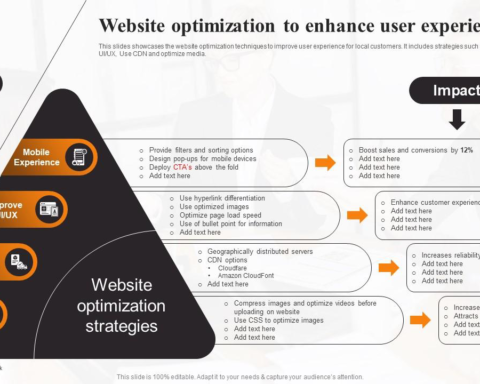Introduction to Streaming Service Advertisements
Streaming platforms have significantly altered how we access and enjoy media. Their emergence has resulted in a notable change in traditional television advertising. Streaming platforms have become crucial for advertisers to connect with a very involved audience. This article uses a data-driven method to examine ads’ effectiveness on streaming services.
When examining the landscape of ads on streaming services, it is crucial to understand their transformative impact on how brands communicate with viewers. This change reflects a shift from traditional TV to more flexible, targeted advertising options. By leveraging the vast amounts of data available, advertisers can create campaigns that are more aligned with their target audiences’ interests and habits.
The Shift from Traditional TV to Streaming
Traditional TV has long been a staple in advertising strategies. However, as audiences migrate to streaming services, advertisers must adapt. The shift brings both challenges and opportunities. The growth in streaming viewership signifies the dwindling dominance of traditional TV, urging marketers to explore new avenues for audience engagement.
The availability of on-demand content and the rise of cord-cutters—viewers who have abandoned cable TV for streaming services—illustrate this seismic shift. This trend necessitates a new approach where data insights play a pivotal role. As more users transition to streaming, advertisers have the unique opportunity to develop highly customized and engaging ads that seamlessly integrate with the viewing experience, making it less intrusive and more enjoyable for the audience.
Advantages of Streaming Service Ads
- Targeted Advertising: Streaming services offer precise targeting options based on viewer preferences and behavior. This allows advertisers to reach niche audiences with specific interests, making the ads more relevant and effective.
- Data-driven Insights: Advertisers can leverage detailed analytics to fine-tune their campaigns. Detailed viewer habits, preferences, and engagement data can help craft highly efficient advertising strategies that drive better ROI.
- High Engagement Rates: Ads on streaming platforms often see higher engagement than traditional TV ads. Streaming ads’ interactive and customized nature makes them more appealing to viewers, increasing engagement and conversion rates.
These advantages have made streaming platforms indispensable for modern advertising strategies. Personalization and data-driven decisions give brands the tools to engage more effectively with their audience. This approach allows for continuous optimization of campaigns, ensuring that they evolve with changing viewer behaviors and preferences, thereby maintaining their effectiveness over time.
Challenges in Streaming Service Advertising
Although there are significant advantages, there are also particular difficulties. Ad fatigue and privacy concerns are major obstacles. Consumers are becoming more cautious about their data use, emphasizing the need for advertisers to focus on transparency. Ensuring viewers feel their privacy is respected is essential for maintaining trust and long-term engagement.
Additionally, the sheer volume of streaming options can make it challenging for advertisers to place their messages effectively. Achieving a balance between frequency and relevance is critical to overcoming these obstacles. Advertisers must avoid overwhelming viewers with excessive ad placements, which can lead to ad fatigue and negative sentiment toward the brand. Instead, a strategy focused on quality and contextually relevant ad content can help maintain interest and reduce the.
Data-Driven Advertising Strategies
Implementing a data-driven approach allows for more personalized and effective advertising. By analyzing viewer data, advertisers can create customized ad experiences that resonate with specific demographics. Big data and analytics tools can provide deeper insights into viewer behaviors, helping to identify trends and preferences that can be leveraged for more impactful campaigns.
Steps to Implement Data-Driven Advertising
- Audience Segmentation: Based on data analysis, identify different viewer segments. This helps craft messages that are highly relevant to each group. Segmentation may depend on age, gender, viewing history, and interests.
- Personalized Content: Create ads tailored to each segment’s interests and viewing habits. This boosts involvement and efficiency. Tailored advertisements have a higher chance of grabbing attention and prompting actions than general advertisements.
- Performance Metrics: Monitor and adjust campaigns based on key performance indicators (KPIs)—data like click-through rates and viewer retention offer essential insights. I consistently examine these metrics to comprehend successful and unsuccessful tactics, enabling continuous refinement of advertising strategies.
With these strategies, advertisers can make data a background tool and a central component of their ad campaigns. This shift towards a data-centric approach ensures that advertising efforts are always aligned with the goals and expectations of the audience, thereby enhancing their overall effectiveness and efficiency.
Future Trends in Streaming Service Advertising
The future for advertisements on streaming services is bright. Advancements in AI and ML will enhance targeting and personalization even more. These technologies will enable even more precise audience segmentation and intelligent ad placements, ensuring that ads are shown to the right people at the right time.
Additionally, interactive ads are expected to become more prevalent, offering viewers a more engaging and participatory experience. Interactive ads can include quizzes, polls, and clickable content that encourage viewers to engage directly with the ad, increasing their impact and memorability.
As technology progresses, advertisers can anticipate increasingly advanced tools to assist in reaching audiences. Monitoring these trends is crucial for maintaining a competitive edge in the fast-paced advertising industry. Embracing these innovations early can give a competitive advantage and guarantee that marketing tactics stay current and efficient despite changes in viewer behaviors and preferences.
Conclusion
Ads on streaming platforms are transforming viewer involvement by utilizing data-driven analysis. With the ongoing changes in this scenery, advertisers need to keep up with the latest trends and technologies to make the most of their reach and impact. By taking advantage of the benefits and tackling the obstacles, brands can generate powerful and unforgettable advertising experiences. Streaming services’ continued growth and evolution present significant opportunities for advertisers willing to adopt a data-driven, viewer-centric approach. By doing so, they can ensure that their advertising efforts reach and resonate with their target audiences, driving meaningful engagement and long-term brand loyalty.
Get the latest scoop and updates on essentialtribune








